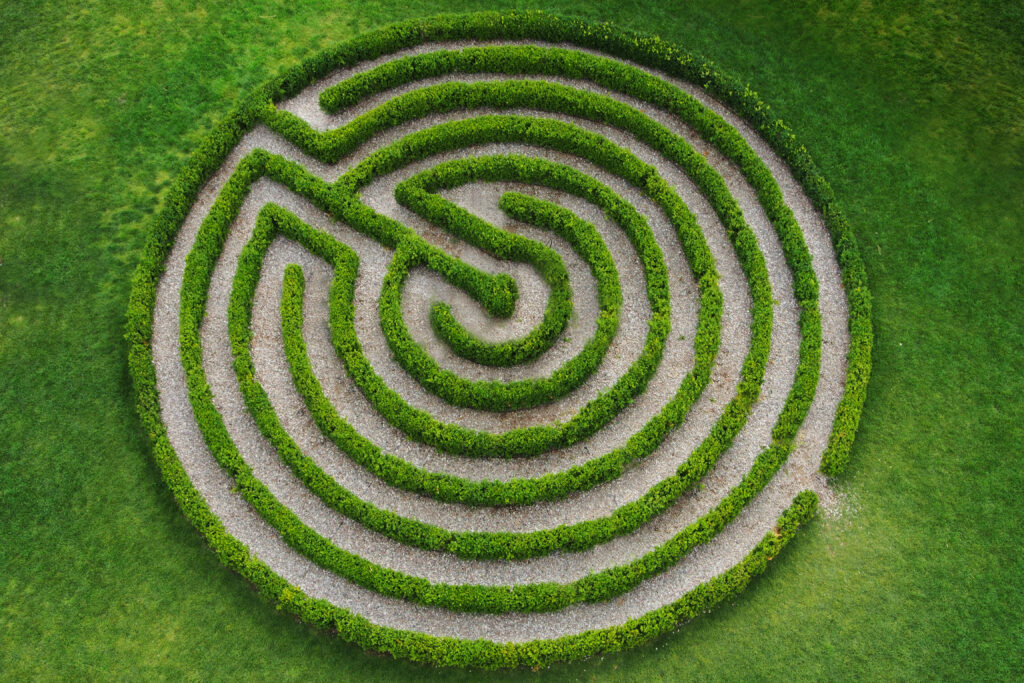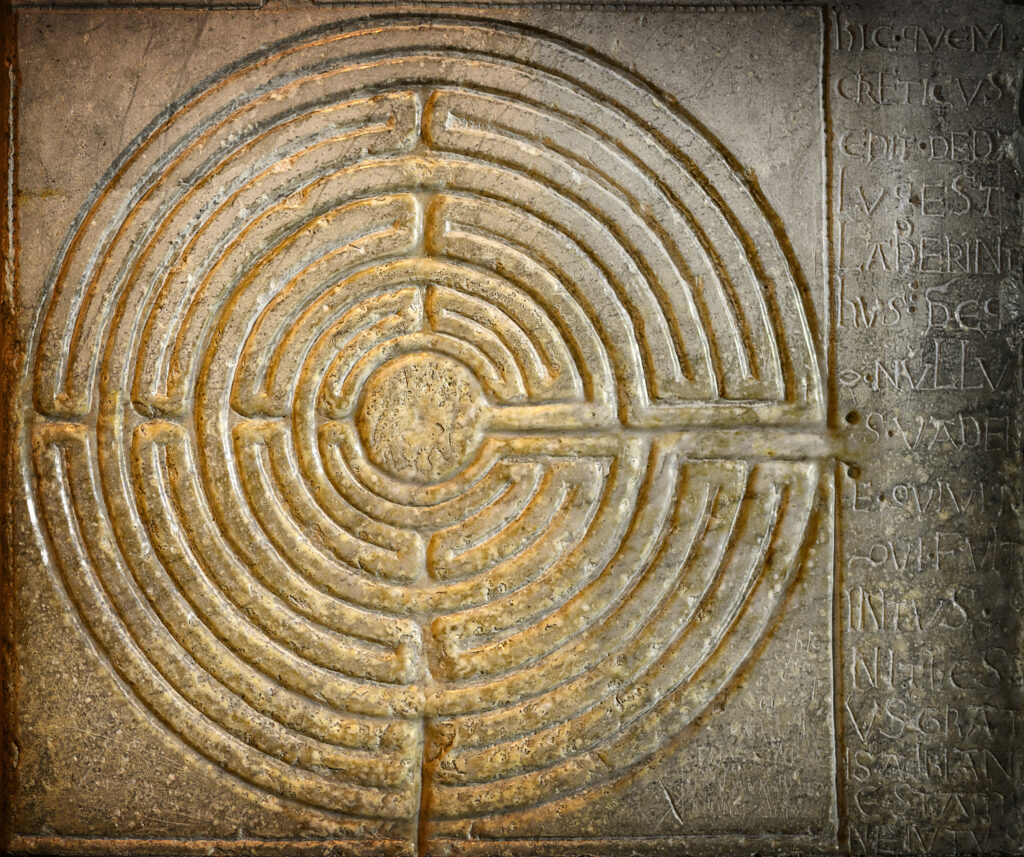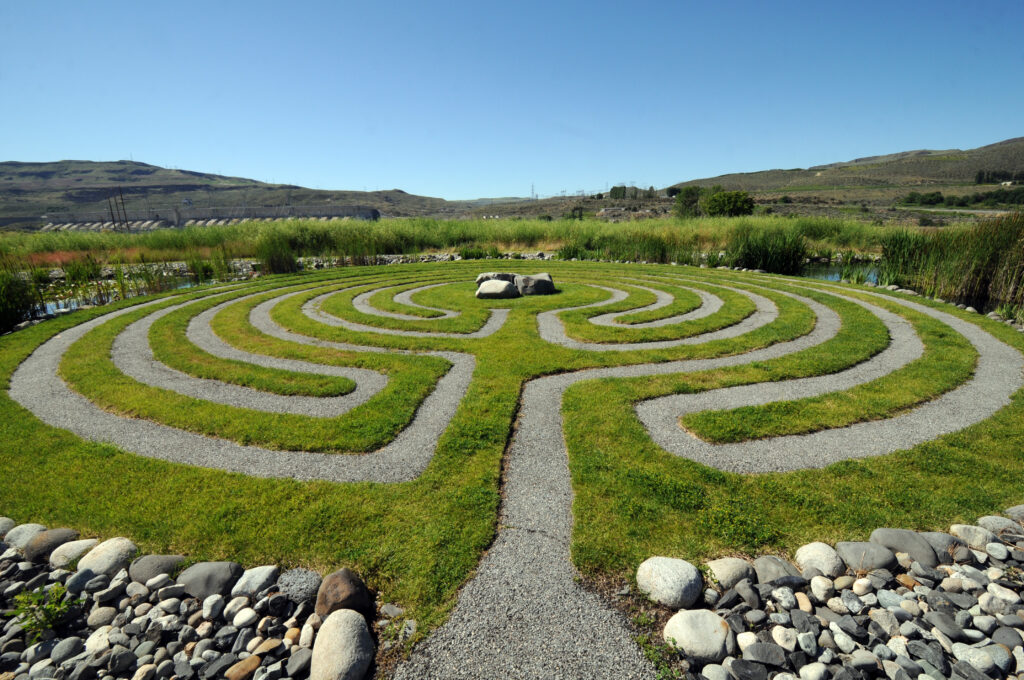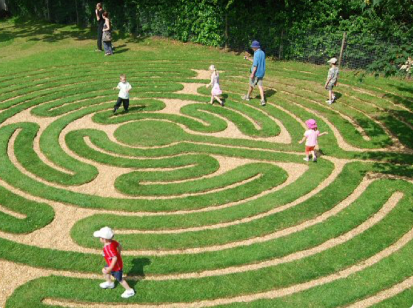The Significance and Value of Labyrinths
Labyrinths have held significance for many cultures around the world for thousands of years, appearing as a symbol in a mythology, a protective image on doorways and buildings, as well as processionary pathways in places of worship and on remote islands, hilltops and headlands. They have also appeared in playgrounds and community gathering places, and their elegant designs have ensured widespread popularity for decorative purposes throughout history. While their uses and forms may vary, they have clearly inspired the imagination in a way that ensured that they are included in many places of cultural significance.
In recent times they have undergone a significant revival and found a renewed purpose as places for spiritual and religious experience, reflection, and interaction. Many report that walking a labyrinth quietens the mind and brings a positive sense of wellbeing, as well as a connection to countless others who have walked or traced the path of the labyrinth in the past. They are often included in educational curricula in diverse subjects including mathematics and geometry, history and geography, anthropology, and the creative arts. The creation of a labyrinth can also build community, as evidenced by many inner city and urban installations and they continue to appeal to artists, architects, educators, landscapers, and writers alike.
It appears that walking or otherwise interacting with the labyrinth might enable a set of physical responses (increased calm, quiet, and relaxation; decreased agitation, anxiety, and stress) that allows for the emergence of a set of “state of mind” responses (increased levels of centeredness, clarity, openness, peace, and reflection). In turn, these “state of mind” responses might increase one’s receptivity to flashes of intuition, hunches, nudges from one’s “inner voice,” and other types of insight regarding one’s problems, issues or concerns.
Rhodes, John W. “Commonly Reported Effects of Labyrinth Walking.” Labyrinth Pathways, 2nd Edition, July 2008, pp. 31–37.
Labyrinth Pathways is one of two annual journals available to members of The Labyrinth Society.
Labyrinths have been used in many ways: as a meditation tool, as a way to process life and find peace, as a daily practice, as a venue to socialize with like-minded people, and more.
With research as a central focus of university life, it’s not surprising to find labyrinths as the subject of research. For more information on the significance and value of labyrinths, see the Labyrinth Society’s research pages and research bibliography. We encourage you to write about your experiences and to share them within your own field and more widely.
If you have enquiries on available research, please contact The Labyrinth Society’s Research Committee.
Looking for an opportunity for presenting papers and posters – and meeting many labyrinth enthusiasts? See The Labyrinth Society’s Annual Gathering page.





